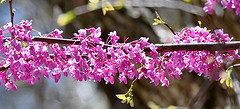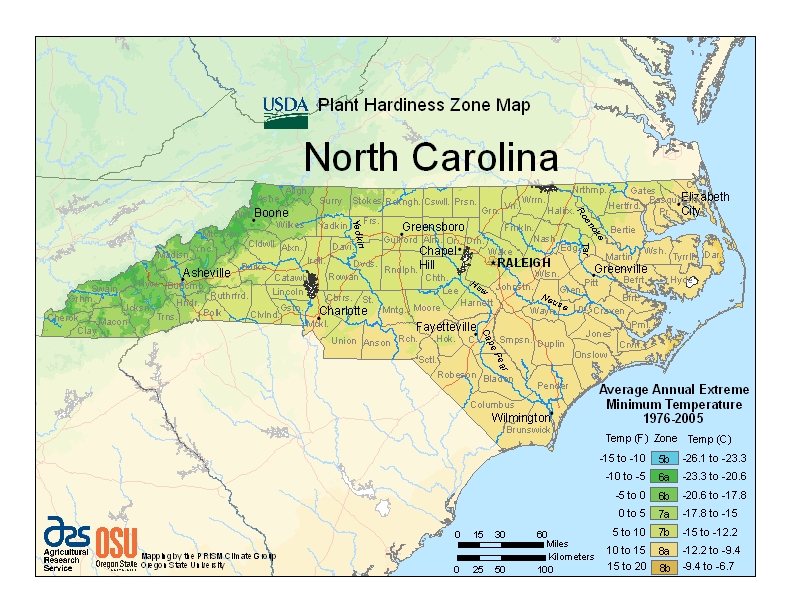Skip to a section:
- Costs – How much do tree services cost in Asheville, North Carolina? Find out more on average cost for services rendered and what stump removal costs are in the area.
- FAQs – Asheville has many different types of trees, and residents should be aware of what types thrive and which don’t. There are also regulations associated with the power lines and the city to take into account as maintenance comes around throughout the year.
- Services – Need a professional out to trim a few limbs or remove a stump? See the full list of professionals in the Asheville area here.
How Much Do Tree Services Cost in Asheville?
Despite being just the 11th-largest city in North Carolina, Asheville is often considered to be the cultural hub of the state. Along with its art, culture, cuisine and live music, the city is appealing because of its scenic beauty and high elevation. Use this guide to better understand the costs of tree maintenance for your property in Asheville, North Carolina.

How Much Does Tree Removal Cost in Asheville?
Whether you want to upgrade your landscaping or just get rid of a tree that poses a risk to your roof in a storm, professional tree removal is ideal. Professionals will come in and tether the tree to ensure that it comes down safely and without damaging any of your property. You can have them haul away the tree, or you might prefer to keep the chopped pieces to use as firewood. Either way, expect the average cost of tree removal in Asheville to cost between $601 and $833, which is well below the national average.
How Much Does Stump Removal Cost
Even after the tree itself is gone, you might want to have an unsightly stump removed. High stumps can be very unattractive, and lower stumps might be a hidden danger in your garden or backyard. Using industrial grinders, professionals can completely remove a stump for around $132 in Asheville.
Average Cost of Tree Maintenance in Asheville
To keep your trees looking their best, pruning or trimming once each year can be a smart move. This ensures that nutrients are going to the right branches, and it keeps trees looking lush and green in dry conditions. On average, bringing in professionals to trim all the trees on your property will cost $288, but that number could go up with taller trees that aren’t easily accessible.
Asheville Tree Facts & FAQs
Whether you have a blank slate and the opportunity to plant new trees on your property in Asheville, North Carolina, or you want to change the existing landscaping, having a guide to the tree regulations and recommendations in the area can be a tremendous help. Read on for power line regulations, tree removal guidelines from the city, what diseases to watch out for, common trees in the area and more.
Tree Removal Rules in Asheville
Duke Energy Progress, the main electricity provider to the Asheville area, recommends that homeowners do not plant any trees directly beneath power lines or in the rights of way. If trees become a threat to the power lines, they will be trimmed by Duke Energy Progress teams, and it may be completed without warning.
In Asheville, tree removal on both public and private property is overseen by the Tree Commission in the City Council. However, private citizens can easily get a permit for tree removal as long as the tree in question has not been designated as historic. If you are denied a permit for removal, you are allowed to appeal the decision. If you plan to remove a tree from your property, the best time to do it is often before the winter frost, which could freeze roots into the ground and make removal difficult.
Popular Trees
Officially known as the Pinus palustris, North Carolina’s state tree is the longleaf pine. This tree has long been an integral part of the state’s economy, and it can be used for everything from turpentine to lumber for ships along the coast of North Carolina.
If you are looking for the tallest trees in Asheville, one of the best places to look is on the historic Biltmore Estate. Home to a number of large trees, the Biltmore Estate boasts a dawn redwood with a height of 131 feet and a girth of 13 feet. The shortest trees include dwarf fruit trees, many of which are found in local nurseries throughout Asheville and the surrounding region.
Common Trees to Spot in Asheville
 Many of the most common trees seen in public and private properties in the Asheville area include some of the native trees listed above. Because these trees tend to require little maintenance, homeowners are quick to include them in landscaping. A list of the most popular trees in Asheville includes:
Many of the most common trees seen in public and private properties in the Asheville area include some of the native trees listed above. Because these trees tend to require little maintenance, homeowners are quick to include them in landscaping. A list of the most popular trees in Asheville includes:
- Chinkapin (Castanea Pumila)
- Eastern redbud (Cercis Canadensis)
- Black cherry (Prunus Serotina)
- Cucumber tree (Magnolia Acuminata)
With its enviable climate, North Carolina as a whole—and Asheville in particular—is home to a number of different fruit trees. Aspiring gardeners living in the area will have the best success with apples, figs, sour cherries, pears and chestnuts. Peaches and persimmons can also grow, but the cold winter is not their ideal climate.
Diseases and Pests Common to Asheville Trees
Unfortunately, trees in the Asheville area can be susceptible to diseases and fungi that cause an unattractive appearance or even the death of an entire tree. The Botanical Gardens of Asheville warns homeowners about the dangers of hemlock woolly adelgid, a big problem in western North Carolina. Sudden oak death is another major problem, and it can affect a range of different trees rather than just oaks.
Best and Worst Trees to Grow in This Climate
Generally speaking, the trees that are best suited to the climate of Asheville are native trees that grew in the area long before the city itself was founded. These native trees generally require minimal watering or maintenance. Trees that tend to do poorly can’t handle frost, which is common at Asheville’s elevation. According to the Asheville Botanical Gardens, native plants that will thrive the best in Asheville include the following:
- Paw-paw
- Red cedar
- Umbrella tree
- Yellow birch
- Red maple
- Tulip tree
Plant Hardiness Zones in North Carolina
Here are the plant hardiness zones for North Carolina, as outlined by USDA:

Image Sources:
Eastern redbud
Local Tree Services in Asheville
